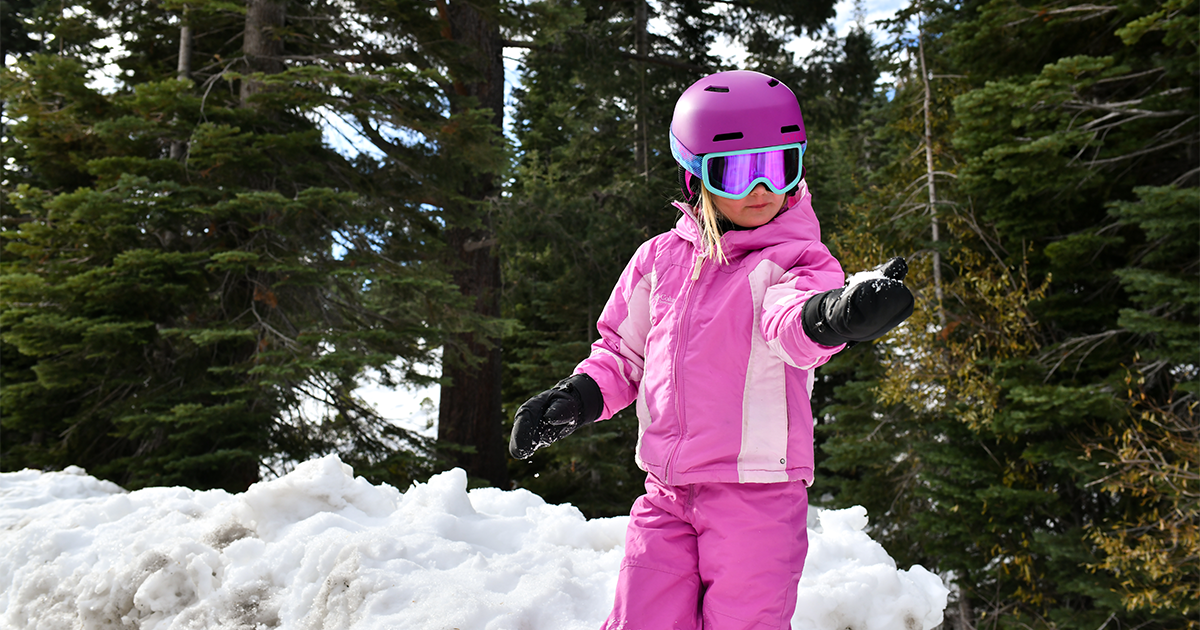 How to Layer for Snow
How to Layer for Snow
How to Layer for Cold Weather and a Day in the Snow
Posted
by
WinterKids
on Thursday, May 22, 2025
When it comes to dressing your kids for a snow day, we use a simple 3-layer system—base layer, midlayer, and outer layer. This helps them stay warm, dry, and happy whether we’re out skiing or just in the backyard. And the convenient thing about layering is that it’s flexible—it’s easy to swap out layers if it’s too warm or too cold. Though it has a few moving parts, once you find your staples, you’ll find it easy no matter where your family goes this season.
Here’s a quick guide and some tips on what to look for when shopping for kids' winter gear:
- Base Layers: The Foundation
The first layer is the base layer—the layer that is closest to the skin. Base layers should fit snugly (without being uncomfortable) and serve two important functions: insulation and moisture management. When kids play hard in the snow, the sweat and moisture that sit close to the skin get cold quickly. That’s why choosing a moisture-wicking material that moves sweat away from the body is essential.
 Burton Kids' Lightweight Base Layer Set
Burton Kids' Lightweight Base Layer Set
Top Base Layer Materials:
- Merino Wool: Merino wool naturally wicks away moisture, regulates temperature, and insulates well without being itchy like traditional wool. It’s the gold standard, though a bit pricer than other options. Check out our favorite merino wool base layers from Smartwool.
- Synthetic Fabrics: Budget-friendly, durable, and still great at wicking moisture, synthetic fabrics like polyester blends make a solid choice for snow play. These Burton sets make it easy, and they come in a ton of fun prints.
- Fleece: Warm, cozy, and soft. Fleece is perfect for cold climates, but may be too hot in milder temps.
- Avoid Cotton: Cotton traps moisture and gets cold quickly, so it’s not a good choice for a baselayer.
What to Look For in a Base Layer:
- Snug, comfortable fit
- Moisture-wicking material
- No cotton
👉 Shop Kids Base Layers
- Midlayers: The Warmth Booster
The midlayer is the insulating layer—it provides kiddos with warmth and works to retain body heat. It goes between the baselayer and the other shell, and can vary depending on temperature and activity level.

For Colder Climates: Opt for heavier options like fleece jackets or insulated pieces.
For Milder Weather: A lightweight ¼ zip pullover may be sufficient.
Midlayer pieces are versatile. There are great layering pieces in the cold, and they can be good stand-alone pieces when going to school on warmer days. For the most part, kids’ outerwear tends to be insulated, so depending on the conditions, you may even skip wearing a midlayer. But when temps drop or wind picks up, it’s a good thing to have on hand.
What to Look For in a Midlayer:
- Warm, insulating materials (like fleece, down, or synthetic insulation)
- Lightweight options for flexible layering
👉 Shop Kids Midlayers
- Outerlayers: Protection from the Elements
The outer layer is the weather shield—keeping snow, wind, and moisture out. It should be waterproof, windproof, and breathable to handle everything from sledding sessions to ski hill runs.
For general snow play or ski days, look for outerwear with a waterproof rating around 10K or so. This provides ample waterproofing and protection from the elements.
Outerlayer Features:

When shopping for kids' outerwear, here are some features we like to keep in mind that can be helpful while out in the snow:
- Jackets: Every kid needs a good winter jacket. Look for jackets that have a helmet-compatible hood. This provides extra protection from the cold in more intense temps without being uncomfortable. Most ski and snowboard jackets also have a powder skirt around the waist for added protection from snow and wind getting in the jacket.
- Pants: The easiest and most straightforward option for outerwear bottoms. Pants offer ease of use and can come with additional features like velco waist adjustments and removable suspenders.
- Bibs: Bibs offer more coverage and warmth than pants. They are easily adjustable, and there’s no worry about pants slipping down while playing in the snow.
- One-Piece Suits: For younger kids, one-piece snowsuits are an excellent option. They’re warm, easy to get in and out of, and offer the most protection from snow and cold.
What to Look For in the Outer Layer:
- Waterproof and breathable materials
- Insulation for warmth
- Features like sealed seams, snow gaiters, a powder skirt, and helmet-compatible hoods for additional protection from the elements
- Extendable sleeves and pant legs — lots of kids' gear has built-in extendable sleeves and pant legs to give your kids an extra inch or two for when they hit a growth spurt mid-season.
Dressing in layers means your kids can stay comfortable whether they’re sledding, skiing, or building a snow fort. With the right gear, they'll stay warm and dry—and you'll spend more time having fun.
Categories:
Skiing & Snowboarding
Tagged: Kids Layering, How to Layer, Ski Clothing, how to choose, winter apparel